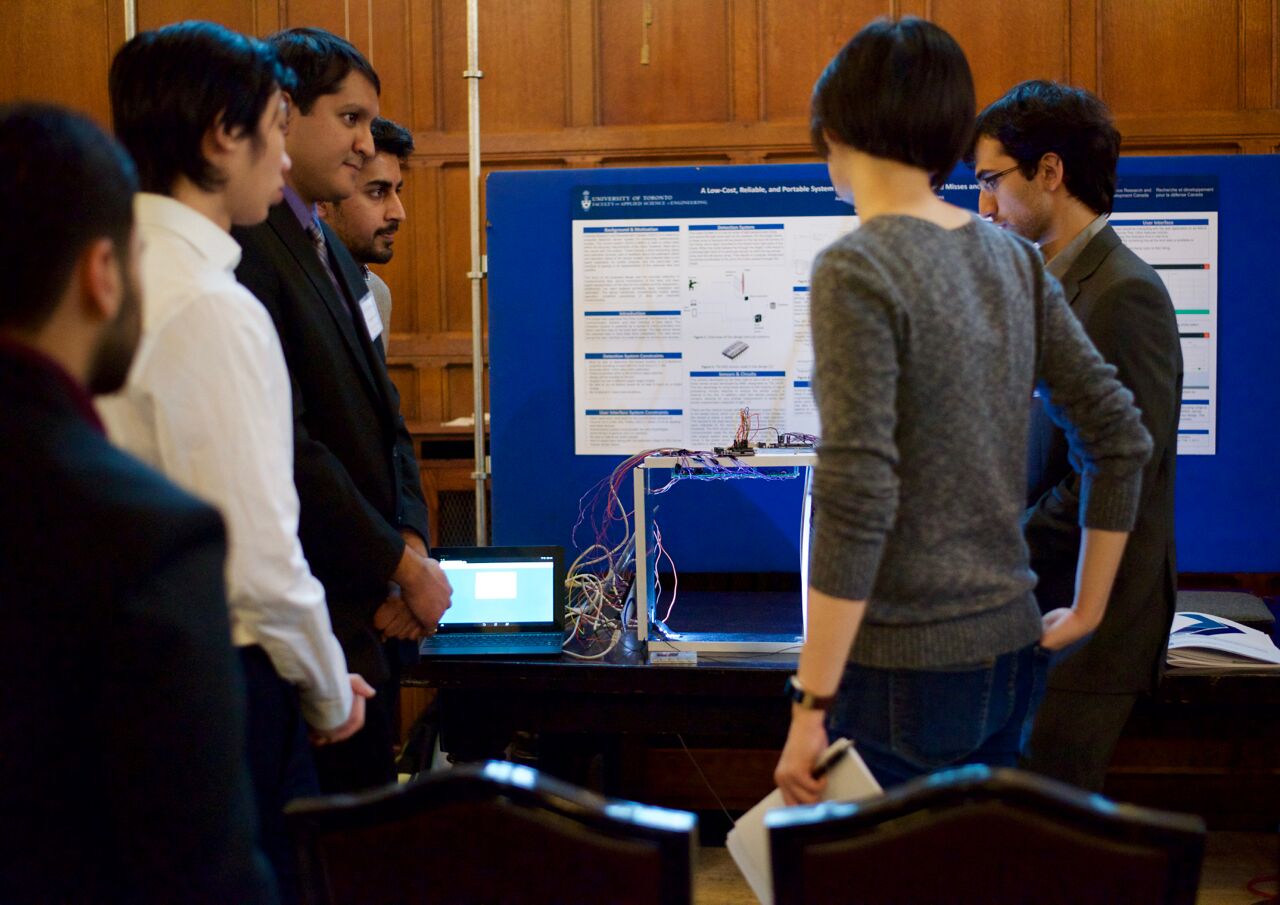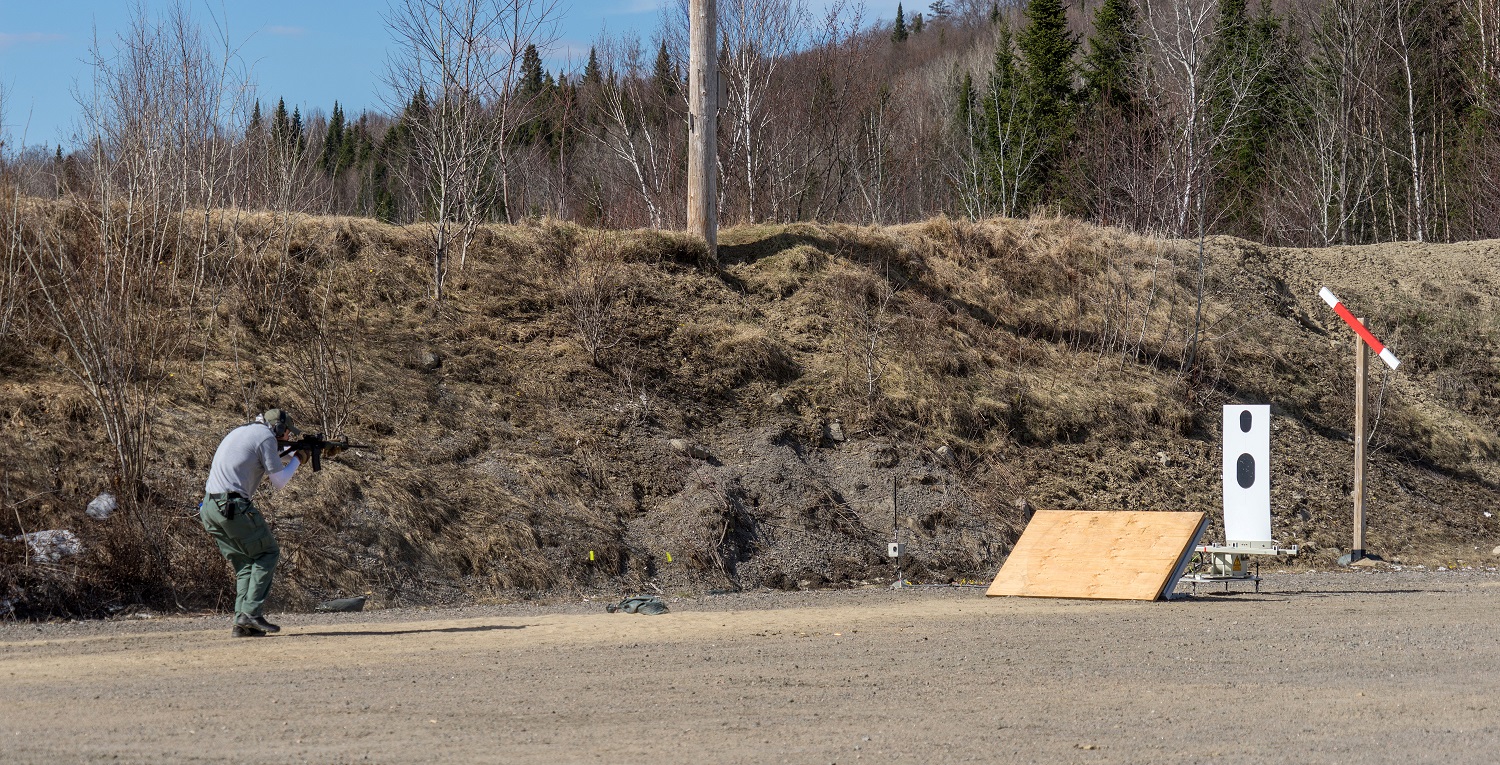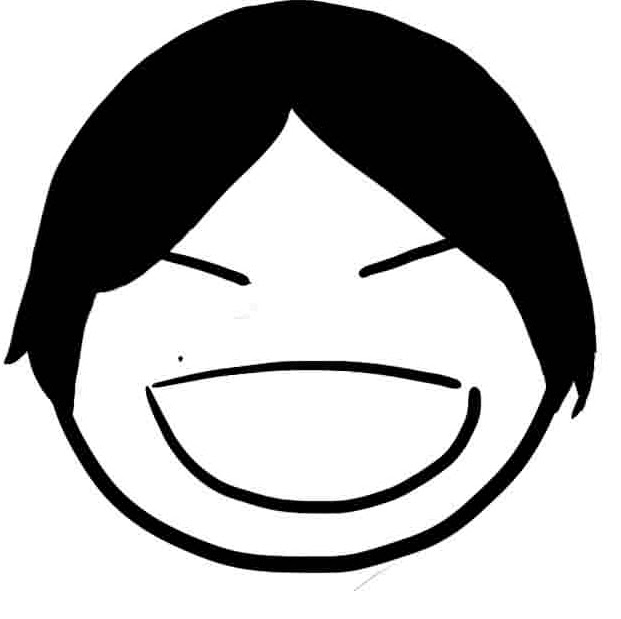 ☰
☰ I enrolled into a Capstone project in my last semester in University of Toronto. It was the closest project in school where I felt like I was build a company.


Defense Research and Development Canada (DRDC) is in need of a projectile detection sensor system for conducting marksmanship studies. The current system (SIUS LOMAH) is able to collect data within the accuracy requirements of the client. However, there are a few issues with this system. These include a time consuming setup and calibration process, lack of feedback about the calibration offset and operation status of the sensor system, the collected data is not easily exportable for further analysis, and the client-side user interface is lacking in its representation of the collected data and usability.
The focus of the proposed design was the accurate collection of marksmanship data, secure transmission of this data, and clear digital representation of the data for the soldiers and the researchers. Additionally, our team targeted portability, easy installation and calibration. The above mentioned considerations enable easier operation, simplified processing of data, and improved marksmanship.
The project was organized into three systems: the Detection System, Communication System, and User Interface and Data Store. The Detection System is powered by a series of micro-controllers that return real-time data to the local web server. The web server stores the collected data in local Data Store (Database). The web server serves the User Interface via a web browser to various user devices.

The solution developed by the team was to use a set of precision linear sensor arrays developed by AMS, designated as TSL1402R.
There are four distinct circuits within the detection system The first is the sensor circuit, which outputs a digital signal if the voltage of the sensor is below a certain threshold during a read operation. The second is the pixel recording circuit, which stores which pixels were indicated by the sensor circuit to be below the voltage threshold. The third circuit is the control circuit, which ...

The key advantage to using these devices is that majority of signal processing circuitry required to analyze the sensor output is internal to the chip. In addition, each 2cm device contains 256 sensors, allowing for very precise measurement of which light sensor experienced a reduction in light.
I am the one who is responsible for the frontend of the detection system. The frontend received the data with REST API from the data base running on the server. The frontend is where the user would be interacting with the detection system. The user would be interacting with the web application on an ASUS Transformer Pad. Features include:
The web application is build with ReactJS framework. ReactJS framework served pretty well for the features we needed to implement. There are field that need to be updated when the detection system is live. ReactJS is decided to handle the update on a efficient matter.
